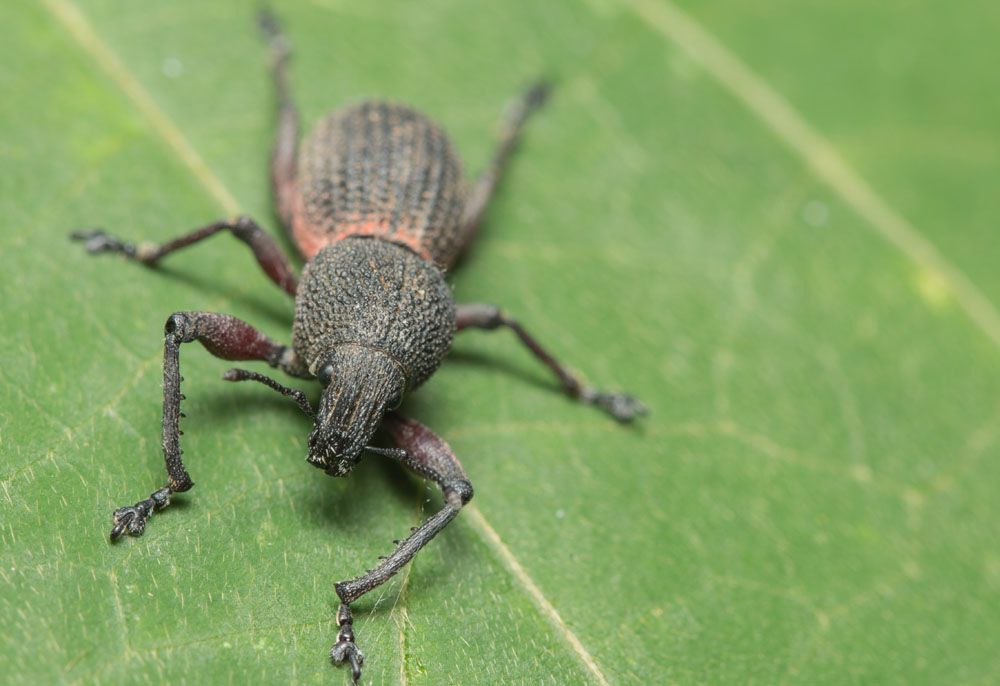
Clay-coloured Weevil – Otiorhynchus singularis
Clay-coloured Weevil (Otiorhynchus singularis)
Common Name: Clay-colored Weevil / Raspberry Weevil
Latin Name: Otiorhynchus singularis
Appearance:
The Raspberry Weevil, also known as the Clay-colored Weevil, is a serious pest of various small fruits, ornamental plants (particularly rhododendron), and conifer seedlings. Each year, there is just one generation. Adults emerge in the spring (March/April), eat mostly at night, and are most active in the spring and fall.
Territory:
The Clay-colored Weevil is a common insect found throughout Canada and the northern United States.
Damages caused by Clay-colored Weevil:
The Clay-colored Weevil feeding damage is modest and causes little harm to the plants. The larvae, which feed on the root systems of host plants during the winter and spring, caused the most harm. Root-feeding larvae can cause stunting and low yields. Plants can perish from heavy infestations.
Life history and habits:
Weevil larvae spend the winter under the soil. During mild winters, feeding may occur. Larvae pupate, and adults emerge between April and June. Adults are nocturnal feeders that spend the day in the soil or organic material at the plant’s base before climbing up to feed on leaves at night. Adult weevils cannot fly and must instead walk or be transferred from one site to another on plant material or equipment.Furthermore, all adults are females with the ability to produce eggs. Adults move slowly and should not be mistaken for more aggressive ground beetles. From June through September, eggs are deposited in clusters in or on the earth. When the eggs hatch, the larvae wiggle through the dirt and begin eating. Each year, there is one generation.
